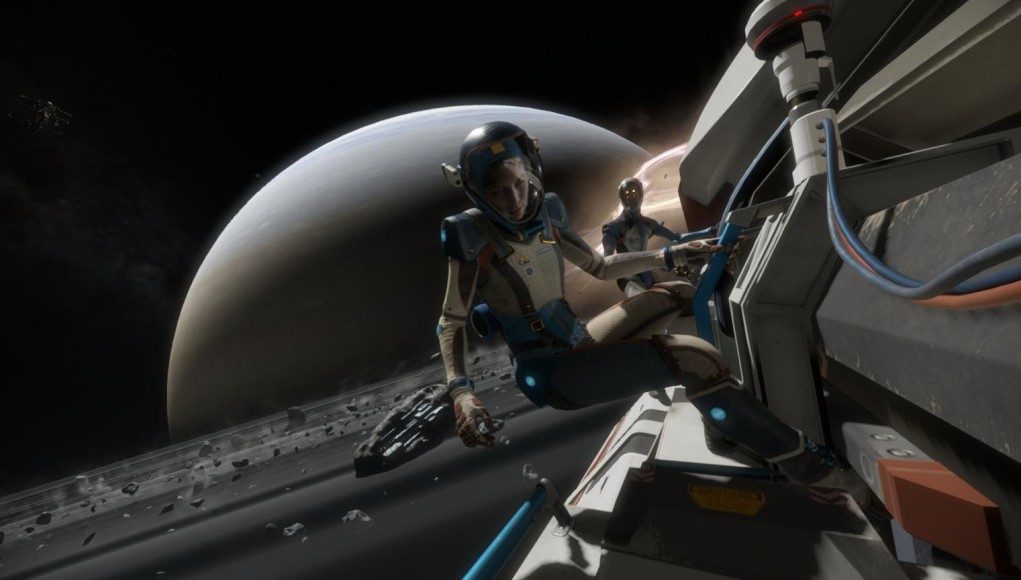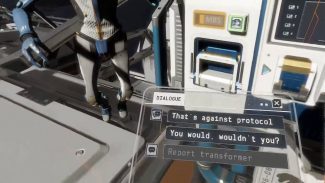Sometimes sci-fi games need only put you head-first into a shiny new world, let you inhabit a universe seemingly ripped from TV and film, and call it a job well done. Then there’s games that use science fiction as a backdrop to a more human story, one that’s been told a million times and in a million ways before, but because we’re human, we always love to hear. These stories co-exist alongside the awe-inspiring technology of holograms, faster-than-light travel, giant space ships, etc. Lone Echo, a first-person narrative-driven adventure, is one of those intensely human tales; a pretty big undertaking considering you’re a robot from the 22nd century.
Lone Echo Details:
Developer: Ready at Dawn
Available On: Oculus Rift (Touch required)
Reviewed On: Oculus Rift
Release Date: July 20, 2017
Note to the reader: Like all of our reviews (unless otherwise marked) this article contains NO SPOILERS. Read away with the confidence that we won’t ruin it for you!
Gameplay
The year is 2126. As an Echo-1 artificial intelligence aboard Khronos II, a mining facility just off the rings of Saturn, your programming compels you to assist Captain Olivia “Liv” Rhodes with her daily tasks as the sole human aboard the space station. Under the circumstances, it’s no surprise her right-hand android has become a close friend and confidant, but it’s almost time for Captain Liv to rotate out. Despite Liv’s characteristically British stiff upper lip, the thought of saying goodbye to her Echo-1 buddy, who she affectionately named Jack, is palpable.
Everything is going well until an anomaly suddenly appears in the distance, knocking out systems all over the ship. Snapping back into action and leaving the thought of teary goodbyes behind, you both set out to undo the damage the anomaly has caused, investigate a strange ship that’s suddenly warped into view, and go further than a little prospecting Echo-1 unit has ever gone before.
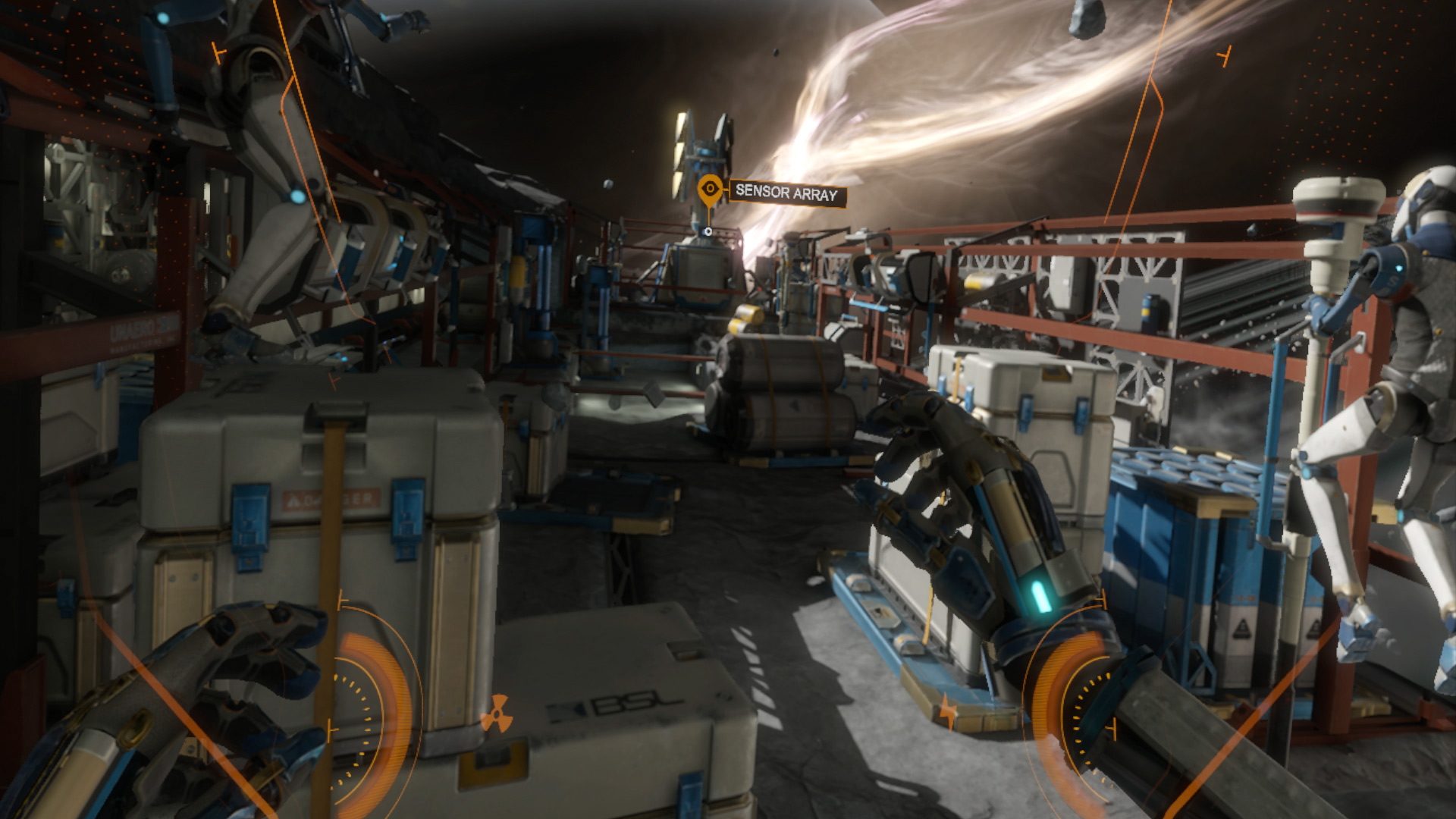
In the beginning, Captain Liv acts somewhat as a taskmaster, sending you out to repair parts of the vast station complex, which includes areas far away from the main station that require small (‘on-rails’) ‘Fury’ transport vessels to reach. Although she’s the boss, she relies upon you for advice, which you can give via a dialogue box that provides you with a number of canned responses. You can alternatively choose to not answer Liv, leaving her wondering what she did to upset you. It comes off like a normal conversation at points, as she even frets about your well-being when you inevitably head out into the wild black yonder to repair systems.
Even though she is a taskmaster, the action doesn’t feel over-tutorialized by Liv because basic instruction is carried out by Hera, Khronos’ resident AI—conducted in independent, in-software learning modules. This leaves you more room to experience the narrative with Liv as your captain and friend, and not your schoolmarm. We’ll talk more about Liv in the ‘Immersion’ section.
Through these training modules, you learn to maneuver in zero-G and use the two tools at your disposal; a blowtorch and a scanner that doubles as a radiation meter—both of which are activated by pressing a button on either side of your robotic wrist. Radiation is the number one killer in the game, and the scanner helps you navigate around hot spots that present themselves throughout. There are plenty of things to slice open too with your torch, like access hatches and control panels, although at times I found the game’s order of operations a little frustrating. First you have to inquire what something is by using the dialogue box, at which point the game lets you use your torch, evidenced by a blue print superimposed on the metal panel.
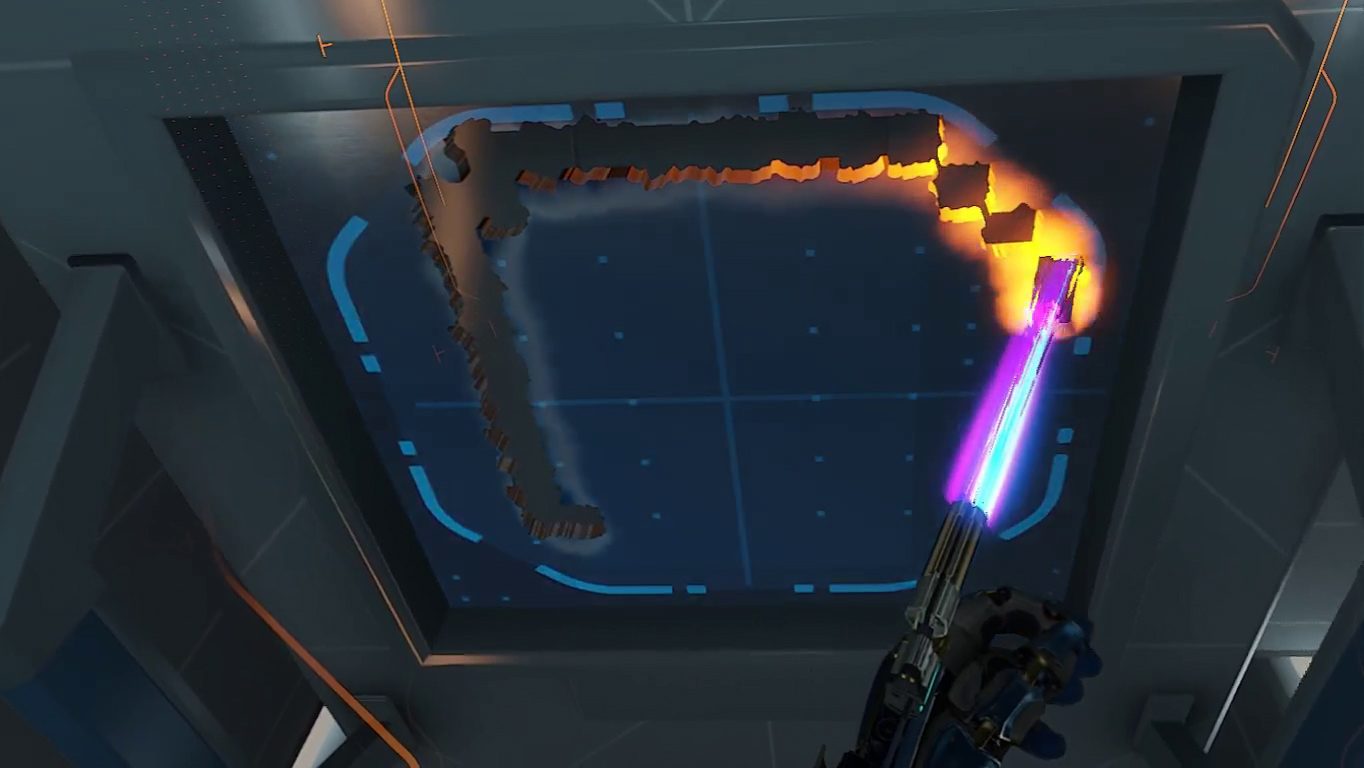
Trying to cut before ‘officially inquiring’ renders your torch ineffectual, as it is on everything in the game (yes, I tried to torch Liv, I’m sorry). This only happened a few times, but it’s always show-stopping, making you look for the little arrows above everything to determine they aren’t important, story-moving elements. Once you understand that the order of operations is infallible, and that skipping ahead will get you nowhere, you accept what must be done and move on. Once you get the hang of things, flipping out the little torch and slicing through stuff becomes natural, if not an interesting exercise in turning something seemingly banal into a cool, immersive way of interacting with the world.
Let’s talk about death. As an artificial intelligence, you can’t really die. Every time you take on too much radiation, or get damaged in some way, you automatically transfer your consciousness to another fresh body. This pretty much removes some of the sting from dying as you step out of another pod, but there’s still the frustration of having to navigate back to where you were originally. You can also recharge your mobile radiation shield by visiting recharge sites periodically placed throughout. As a human, Liv doesn’t have this luxury.
I clocked around 6 hours to complete Lone Echo, although there are plenty of optional side tasks, audio logs concerning Liv, and Easter eggs to find throughout the game. If you’re like me, you’ll blow past most of these unless they’re right in front of you as you try to move the story forward—something I would consider to be one of, if not the most suspenseful and artfully-crafted narratives in VR to date.
Immersion
Presence (with a capital ‘P’), like in many games, tends to grip you when you least suspect it: you’re grabbing a tool from Liv, trying to figure out how to fix a satellite, or cutting open a vent with your blowtorch. You just… forget you’re actually in your underwear work appropriate clothing in your apartment for a brief moment. Granted, there are times when you buck up against the technical limitations of the game (a 3×3 meter play area is highly suggested) but from tip-to-toe, Lone Echo absolutely entranced me.
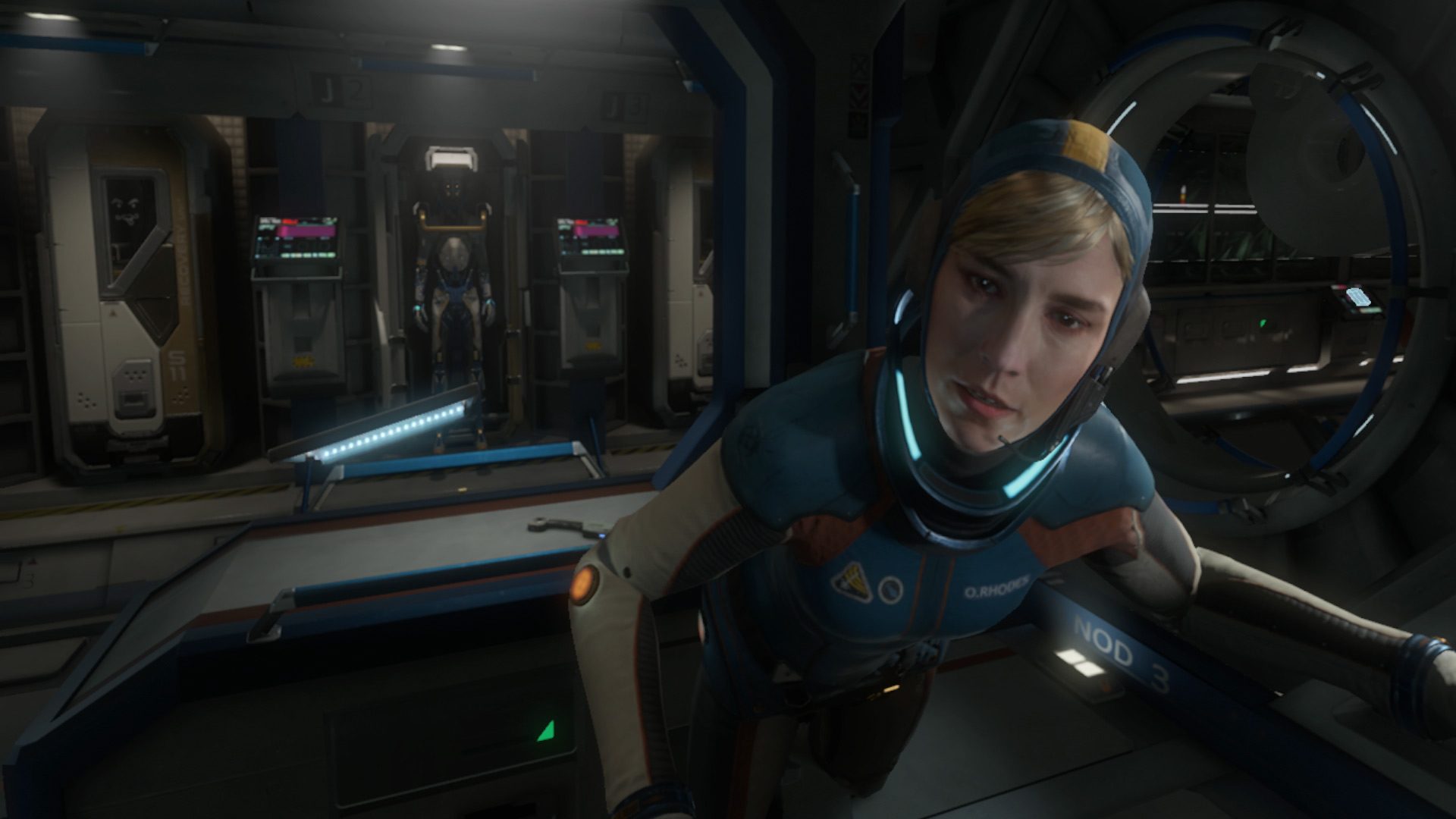
Despite her space-hardened exterior, deep down Liv cares about your safety even though she knows you’re effectively immortal. Because she imbues you with humanity, you want to return the connection by helping her, by being her only human despite the fact you have a hard time understanding her typically acerbic jokes with your near-human AI. Lone Echo masterfully sets the scene for this connection to organically grow from the start, so that through and through, Liv feels like a sweet, caring older sister—truly the real star of the show.
Ironically, her own game AI predictably has its limitations, and sometimes her gaze-tracking isn’t quite right, leaving you with a stare that might shoot over your shoulder instead of directly in your eyes (in VR it’s easier to see those smaller details, and they’re more important)—but Liv is undeniably human. This is thanks to a number of factors including competent voice acting, obsessive work in character modeling, and excellent motion capture that puts her nearly on the other side of the uncanny valley. It’s amazing to say the least.
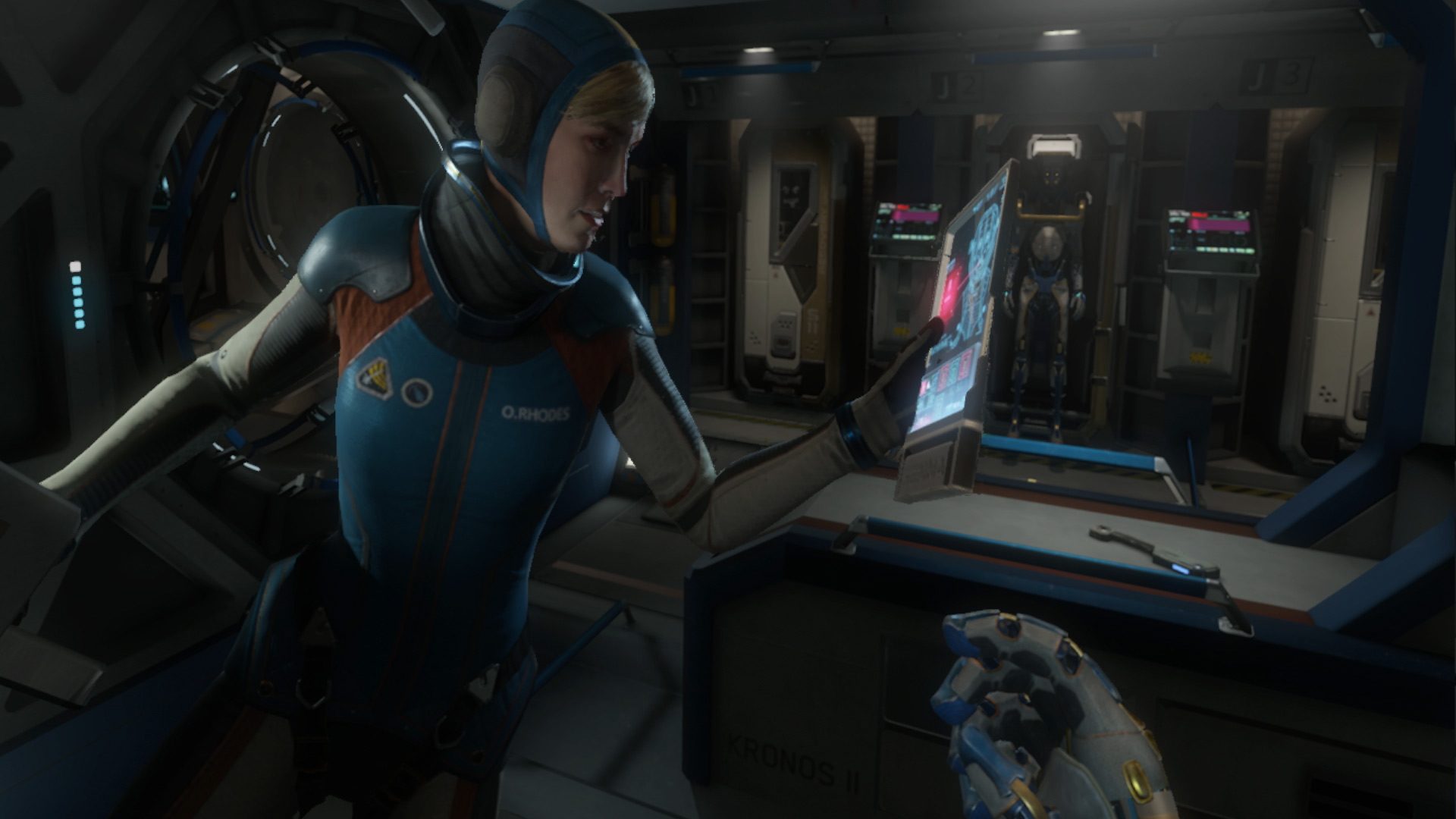
As for your own body, the game’s inverse kinematics are as good as I’ve ever seen in VR, with your arms and hands matching well-enough with your physical body to be believable—besides your feet which naturally trail behind you as you float in the zero-G environment.
Looking down at your robotic hands, covered in a swath of different textures like rubber fingertips (complete with raised fingerprints for added grip) and openly visible connections, combined with the ever-present whir of tiny servos as you flex your robo-appendages, all adds to the cumulative immersion. The developers also innovated procedural grip animations, which conform to the world around you dynamically for a more realistic hand pose.
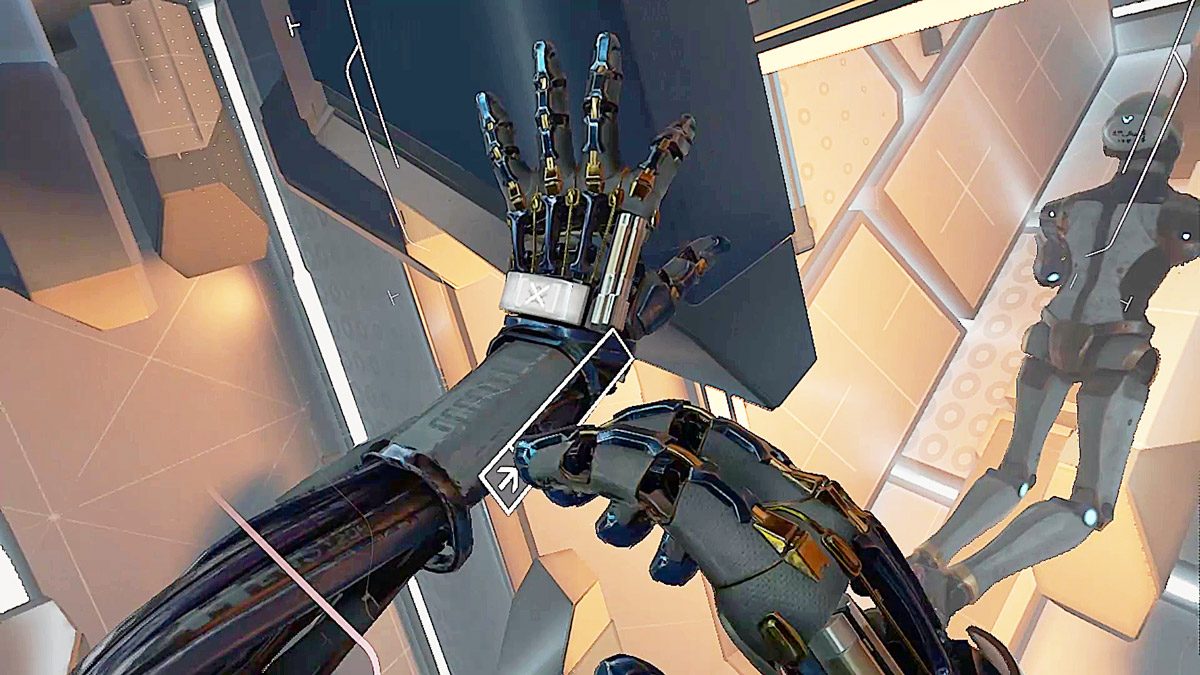
Then there’s the scale. Suffice it to say that the world is jaw-droppingly massive, and rendered in sufficient detail—strange ships and their alien weirdness included—to hit all the right beats in what feels like an intimidating, but ultimately real place.
Comfort
The game’s world-shifting locomotion scheme has been proven to work in other titles before, including Climbey (2016) and The Climb (2016) for Oculus Touch. If you haven’t tried either of those—or the free multiplayer game Echo Arena (2017) launching alongside Lone Echo which uses the same scheme—the best way to describe it is “grabbing the world and flinging yourself.”
[gfycat data_id=”RectangularAnchoredKatydid”]
There’s a high degree of predictability to moving through the world of Lone Echo as you grab onto the ship’s structure and use it to propel yourself, which is partly why Echo Arena has celebrated so much fanfare in the recent weeks of beta access. It’s easy to wrap your head around how to move through the world at a fast clip with your hand-mounted boosters and it’s—a phrase I use all too often—exceedingly comfortable as a locomotion scheme.
Of course, with elements in your peripheral vision helping to ‘anchor’ you to the world, much like a cockpit does in games like EVE Valkyrie (2016), the zero-G element becomes an easier proposition to handle as well. Important to note: Lone Echo starts up with a default ‘horizon lock’ that keeps your constantly oriented with a verifiable up and down that never changes. This can be toggled off, but isn’t recommended for comfort reasons.
That said, popping out of the headset and walking around my gravity-burdened house after learning to navigate in virtual zero-G was an interesting experience to say the least. In the back of my mind, I kept imagining myself grabbing onto door jams, my couch, anything and using it to fly off into another room. If that doesn’t speak to the impressiveness of the game’s rock-solid locomotion scheme, I don’t know what does. The only niggling bit is the game’s transport vessels, that take you on a somewhat twisty-turny ride to your medium-distance points of interest. These introduces some artificial (i.e. unwanted) turning, and can be somewhat uncomfortable.

For the hardcore smooth-turning junkies, the game’s settings allow for smooth turning on all axes, meaning you can effectively ‘pilot’ yourself through the world without having to so much as move your head left or right. For many this will be unsettling, which is why a more comfortable snap-turn is available by default for players using a two-sensor, front-facing setup. Lone Echo users with three or more Oculus sensors will undoubtedly benefit in terms of comfort and immersion simply by virtue of the fact that you can spin 360 degrees without your body blocking view of your controllers.
As a user with only two sensors, there was a certain amount of frustration with this. I kept naturally turning my body to face the action, which invariably meant I was occluding my Touch controllers. Eventually I sat down in a chair, which limited this somewhat, but I was still so immersed in the game I would only notice I was physically positioned away from the sensors when my hands would do the weird skittery dance I’ve grown to dislike intensely. This can be solved by adding another sensor, but it’s neither standard, nor requisite if you can keep your feet more or less planted in the same place physically.
If you’re looking for info on Echo Arena, Lone Echo’s free multiplayer mode, head over to our coverage on the past Echo Arena open beta.

